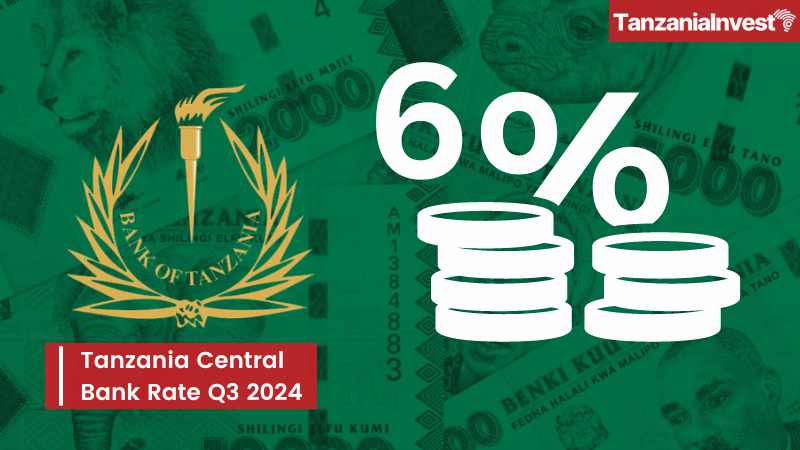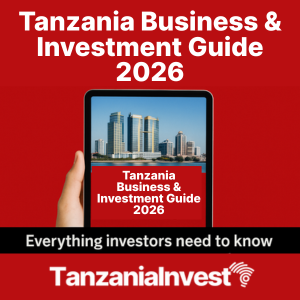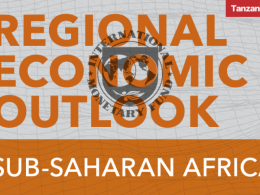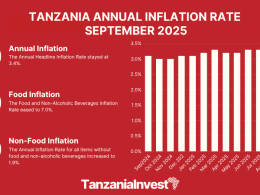The Monetary Policy Committee (MPC) of the Central Bank of Tanzania (BOT) at its meeting on 3rd July 2024, decided to keep the central bank rate (CBR) unchanged at 6%.
The MPC’s assessment of the outlook of the economy and the balance of risks indicate that, the implementation of monetary policy in the previous two quarters has successfully anchored inflation expectations well below the target of 5%.
This is also reinforced by a positive outlook for the global economy, especially expectations of falling inflation in most countries, easing financial conditions in international markets, and moderate prices in the world market.
Furthermore, the MPC expects Tanzania economy to continue growing strongly, food supply to be adequate, and exchange rate pressures to moderate owing to increased foreign exchange inflows from tourism, gold, as well as cash crops and food.
Recent Economic Performance and Outlook
In addition, the MPC discussed global and domestic economic conditions in the first two quarters of 2024 and the outlook for the remainder of the year.
Global Economy
On global economic activity, the MPC observed that growth outturns in the first and second quarters of 2024 have been strong in most countries.
Inflation has been falling, financial conditions easing, and central banks in most countries have receded the interest rate hiking cycle.
Crude oil prices declined but edged up towards the end of June 2024.
The price of gold remained elevated, as investors sought safe-haven assets, amidst currency depreciation and geopolitical conflicts.
On balance, these global economic conditions are expected to prevail in the outer period of 2024 and the subsequent year, despite facing a risk of further escalation of geopolitical conflicts and trade disputes.
Domestic Economy
Domestic economic conditions have improved significantly in the recent past, at the back of the implementation of policies and reforms for fostering high economic growth.
The outlook also is positive, driven by expected favorable weather for agriculture, adequate power supply, improvement in infrastructure (especially railways, roads, and ports), as well as policies and reform programs.
The summary of the assessment of the recent performance of the economy and outlook is as follows:
(i) The economy continued to grow, recording a growth of 5.1% in 2023, higher than 4.7% in the previous year. The main growth drivers were agriculture, mining, quarrying, construction, and financial intermediation (mainly credit to the private sector). Tourism, which cuts across many activities, also contributed to the strong growth. The MPC forecast growth in the first and second quarters of 2024 also to be high, at around 5% and 5.4%, respectively. Similarly, the Zanzibar economy expanded by 7.4% in 2023, compared to 6.8% in 2022, driven largely by tourism activities, food services, construction, and real estate. Economic growth is projected to be high in the second half of 2024 and the years ahead.
(ii) Inflation remained below the target of 5% and consistent with the EAC and SADC convergence criteria. In April and May 2024, inflation was 3% and 3.1%, respectively. The inflation outturn was attributable to low food inflation from adequate food supply, complemented by prudent monetary and fiscal policies. Inflation in Zanzibar also declined to the medium target of 5%, owing to a decline in both food and non-food prices. Inflation is projected to remain low in the second half of 2024 and beyond, ranging from 3-4%, driven by prudent monetary and fiscal policies, adequate food supply, stable power supply, and moderate consumer goods prices in the world market.
(iii) Economic and monetary conditions contributed to strong private sector credit growth and stability of the financial sector. On an annual basis, private sector credit growth averaged 16.4% during the second quarter of 2024, compared with 17.1% in the preceding quarter. The banking sector remained liquid, profitable, and adequately capitalized; with deposits, assets, and loans increasing. Asset quality improved, as reflected by a lower NPL ratio of 4.4% in May 2024, below the tolerable level of 5% and 5.5% recorded in the corresponding period in 2023. Credit to the private sector is expected to remain high, against the backdrop of improving global and domestic economic conditions.
(iv) Fiscal performance was satisfactory, aligned with the budget, and supported the implementation of monetary policy. Revenue performance improved during the quarter, estimated at 95% of the target. Zanzibar’s revenue surpassed the target by 0.3%, largely due to improved taxpayer compliance and payment of tax arrears. For 2024/25, the Government intends to implement fiscal consolidation to align expenditure with resources and continue implementing the IMF-supported ECF program successfully, along with the Resilience and Sustainability Facility program.
(v) The current account position continued to improve, as the global economy normalized from economic shocks. Exports improved on account of gold, tourism, and traditional crops, meanwhile, imports increased to a lesser extent than exports. As a result, the current account deficit is estimated to have narrowed to USD 959.2 million in the quarter ending June 2024 compared with USD 977.8 million in the corresponding quarter in 2023. In Zanzibar, the current account is estimated to have reached a surplus of USD 421.5 million in the year ending June 2024, compared with a surplus of USD 411.5 million in the corresponding period in 2023, attributed to an increase in service receipts, particularly tourism. The current account deficit is expected to continue gradually improving, reaching 3.2% of GDP in the subsequent quarters.
(vi) Foreign exchange reserves remained adequate, above USD 5 billion at the end of June 2024, sufficient to cover more than 4 months of projected imports. Foreign currency liquidity improved slightly towards the end of June 2024, attributable to a gradual increase in foreign flows from tobacco, gold, and tourism. There is anticipation of a further increase in foreign exchange inflows from tourism, mining, traditional exports, and the export of food to neighboring countries. The projected improvement in global economic conditions and moderation in the commodity prices in the global market will also contribute. Furthermore, measures to limit transaction dollarisation between residents (invoicing or quotation and payment using foreign currency) are expected to reduce the demand for foreign currency and increase foreign reserves. The Bank is expected to increase the diversification of its foreign reserve portfolio through the purchase of gold from local markets.










